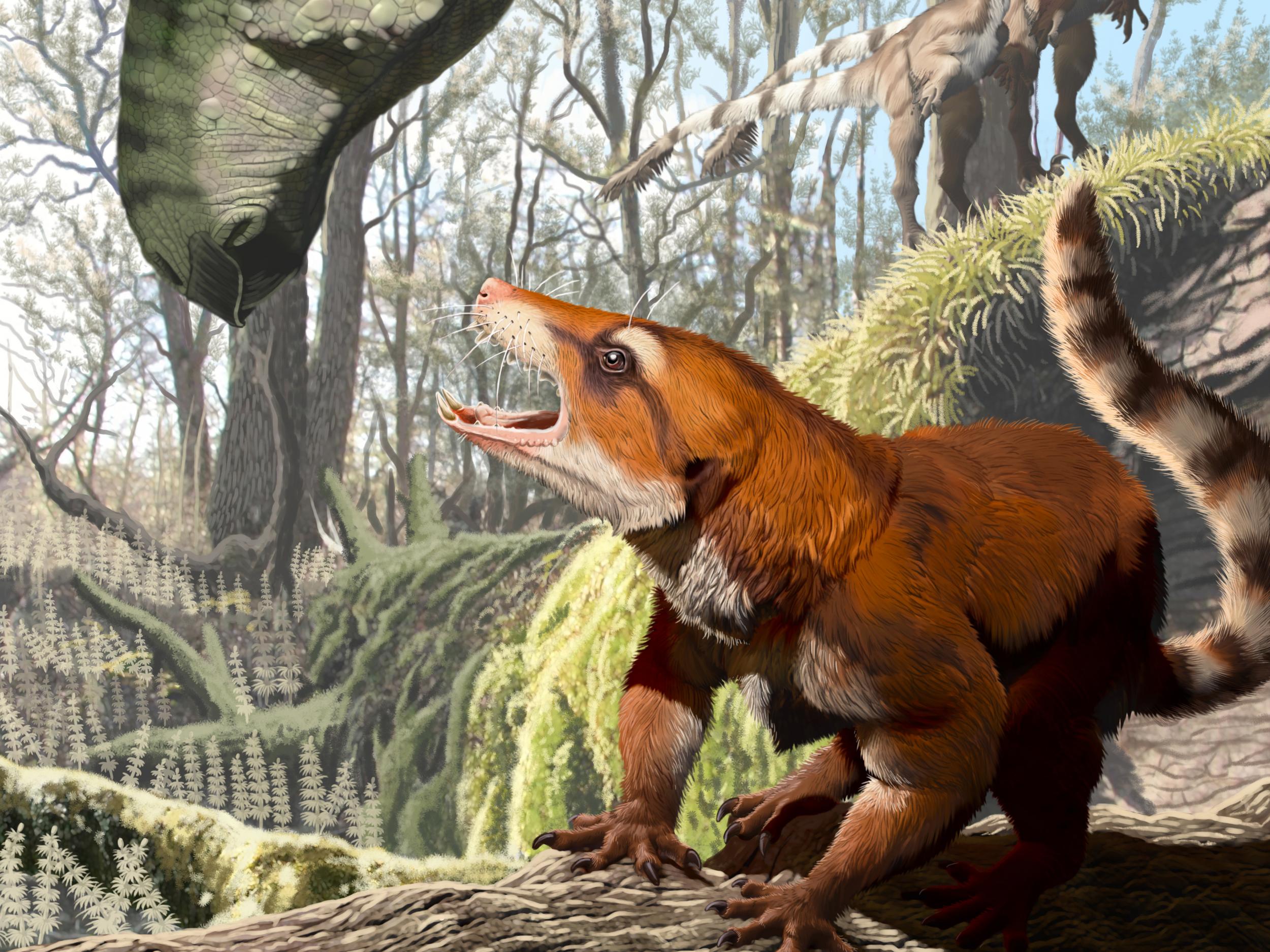The Independent's journalism is supported by our readers. When you purchase through links on our site, we may earn commission.
Ancient mammal discovery reveals supercontinent split far later than previously thought
'Unlikely' find in Utah reveals diversity of early mammalian family tree

Your support helps us to tell the story
From reproductive rights to climate change to Big Tech, The Independent is on the ground when the story is developing. Whether it's investigating the financials of Elon Musk's pro-Trump PAC or producing our latest documentary, 'The A Word', which shines a light on the American women fighting for reproductive rights, we know how important it is to parse out the facts from the messaging.
At such a critical moment in US history, we need reporters on the ground. Your donation allows us to keep sending journalists to speak to both sides of the story.
The Independent is trusted by Americans across the entire political spectrum. And unlike many other quality news outlets, we choose not to lock Americans out of our reporting and analysis with paywalls. We believe quality journalism should be available to everyone, paid for by those who can afford it.
Your support makes all the difference.The unexpected discovery of a fossil skull in Utah could help re-shape the history of our planet.
Earth’s continents as we know them today were once part of a larger supercontinent known as Pangaea.
The presence of the newly discovered creature, which belonged to an early branch of the mammal family tree in North America around 130 million years ago suggests this landmass stayed connected far longer than previously thought.
Together with the discovery of similar animals in northern Africa from the same era, the fossil's discovery indicates land bridges linked the regions well beyond the point at which they supposedly divided with the splitting of Pangaea.
This would have allowed these early mammal relatives to migrate between these regions for around 15 million years longer than prior estimates suggest.
According to Dr Adam Huttenlocker of the University of Southern California, this discovery confirms suspicions raised by dinosaur fossils recently found in Europe and Africa.
Besides prompting a revision of the planet’s history, the discovery of the creature – named Cifelliodon wahkarmoosuch – has also shaken up scientists’ understanding of the mammal family tree.
"Based on the unlikely discovery of this near-complete fossil cranium, we now recognise a new, cosmopolitan group of early mammal relatives," said Dr Huttenlocker
The first mammals were tiny creatures that scurried around beneath the dinosaurs’ feet for millennia before becoming the dominant group we see today.
Compared to them, the hare-sized Cifelliodon would have been a veritable giant. Its occurrence in North America has added to a body of evidence that the earliest mammals were far more widespread and varied than scientists have given them credit for.
"For a long time, we thought early mammals from the Cretaceous (145 to 66 million years ago) were anatomically similar and not ecologically diverse," said Dr Huttenlocker.
"This finding by our team and others reinforce that, even before the rise of modern mammals, ancient relatives of mammals were exploring specialty niches.”
Fossils discovered in China complete with soft tissues have previously suggested these creatures were both predators and carnivores, with some inhabiting aquatic environments and others even taking to the air like modern flying squirrels.
“Basically, they were occupying a variety of niches that we see them occupy today,” explained Dr Huttenlocker.
Dr James Kirkland, a Utah Geological Survey palaeontologist who led the excavation, described the discovery of Cifelliodon as an “extremely rare find”. A description of the specimen was published in the journal Nature.
Based on CT scans of the skull, they found this ancient mammal had a small brain but huge "olfactory bulbs" to process smells. Its tiny eye sockets suggest vision was not important and the creature may have been nocturnal and relied on smell to hunt for food.
In naming their new species, the scientists decided to honour famed paleontologist Richard Cifell, as well as borrowing the word "wahkarmoosuch" from the local Ute tribe's language – a word that means “yellow cat”.
Join our commenting forum
Join thought-provoking conversations, follow other Independent readers and see their replies
Comments